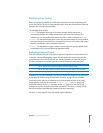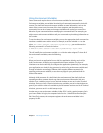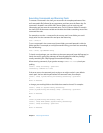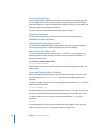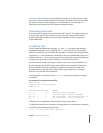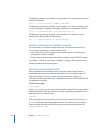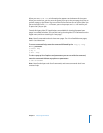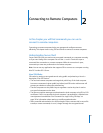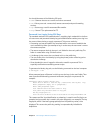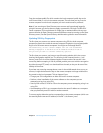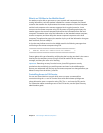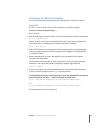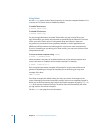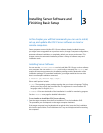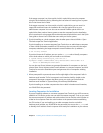
2
31
2 Connecting to Remote Computers
In this chapter you will find commands you can use to
connect to remote computers.
Connecting to remote computers helps you manage and configure resources
efficiently. This chapter covers using SSH and Telnet to connect to remote computers.
Understanding Secure Shell
Secure Shell (SSH) lets you send secure, encrypted commands to a computer remotely,
as if you were sitting at the computer. You use the ssh tool in Terminal to open a
command-line connection to a remote computer. While the connection is open,
commands you enter are performed on the remote computer.
Note: You can use any application that supports SSH to connect to a computer running
Mac OS X or Mac OS X Server.
How SSH Works
SSH works by setting up encrypted tunnels using public and private keys. Here is a
description of an SSH session:
 The local and remote computers exchange their public keys. If the local computer
has never encountered a given public key before, both SSH and a web browser will
prompt you whether to accept the unknown key.
 The two computers use the public keys to negotiate a session key that is used to
encrypt all subsequent session data.
 The remote computer attempts to authenticate the local computer using RSA or DSA
certificates. If this is not possible, the local computer is prompted for a standard user-
name/password combination. See “Password-Less Logins Using SSH Keys” on
page 32 for information about setting up certificate authentication.
 After successful authentication, the session begins. Either a remote shell, a secure file
transfer, a remote command, or so on, is begun through the encrypted tunnel.



